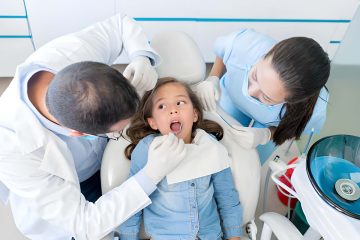Mastering the Art of Specialized Autoinjector Training Devices

Key Takeaways:
- Specialized autoinjector training devices are important in healthcare training and patient education.
- Hands-on training with these devices allows healthcare professionals to develop skills and improve dexterity.
- Patients can practice with training devices to gain confidence in self-administering medication.
- Autoinjector training devices contribute to patient education, empowerment, and medication adherence.
- Different types of training devices offer different levels of realism and feedback.
- Proper handling, patient comfort, and addressing common errors are important when using training devices.
- Cutting-edge innovations in training devices include virtual reality and smart technology.
- The future holds potential for advancements in realism, interactivity, and personalization of training experiences.
- The Importance of Specialized Autoinjector Training Devices
Specialized autoinjector training devices play a crucial role in healthcare training and patient education. These devices are designed to mimic the functionality of actual autoinjectors, allowing healthcare professionals and patients to practice the correct administration technique without using real medication. By providing hands-on training, these devices offer several advantages in terms of skill development and patient confidence.
The Advantages of Hands-On Training
Hands-on training is widely recognized as one of the most effective methods for learning and skill development. When it comes to autoinjector training, the same principle applies. Specialized training devices enable healthcare professionals to practice the correct administration technique and become proficient in handling autoinjectors. By repeatedly simulating the injection process, healthcare professionals can develop muscle memory and improve their dexterity, ensuring accurate and efficient administration in real-world scenarios.
Moreover, hands-on training allows healthcare professionals to experience the tactile feedback of using an autoinjector, including activating the mechanism and feeling the resistance of the injection. This interactive experience enhances their understanding of the injection process and prepares them for any challenges they may encounter during actual patient care.
Enhancing Patient Confidence through Simulated Experiences
Autoinjector training devices also play a vital role in empowering patients to self-administer medication with confidence. By providing patients with the opportunity to practice using a training device, healthcare professionals can alleviate their fears and anxieties around the injection process.
Through simulated experiences, patients can become familiar with the autoinjector device and gain confidence in using it correctly. They can practice handling the device, positioning it at the proper injection site, and applying the necessary pressure to trigger the injection. This hands-on approach allows patients to develop the skills and confidence needed for successful self-administration at home.
Understanding the Role of Autoinjector Training Devices
Autoinjector training devices serve as essential educational tools for healthcare professionals and patients alike. They provide a safe and controlled environment for learning and practicing injection techniques. By mastering the art of autoinjector use through training devices, healthcare professionals can ensure accurate drug delivery to patients, minimizing the risk of complications or suboptimal treatment outcomes.
Additionally, these training devices contribute to patient education and empowerment. By enabling patients to practice using an autoinjector, healthcare professionals can empower them to take an active role in their treatment and improve medication adherence.
- Exploring the Different Types of Specialized Autoinjector Training Devices
Over the years, specialized autoinjector training devices have evolved significantly, offering a range of options for training and education purposes. Let’s explore the different types of devices available and their benefits.
An Overview of Traditional Training Methods
In the past, traditional training methods for autoinjector use primarily involved using empty syringes or simulated injection pads. While these methods were useful in teaching the basic mechanics of injection, they lacked the realism and interactivity provided by specialized training devices.
Empty syringes allowed healthcare professionals to practice proper needle handling and assembly procedures but did not simulate the complete autoinjection process. Simulated injection pads, on the other hand, provided a surface for practicing injection techniques but did not replicate the experience of using an actual autoinjector device.
The Evolution of Interactive Training Devices
To address the limitations of traditional training methods, interactive autoinjector training devices were developed. These devices closely resemble real autoinjectors in terms of appearance, functionality, and tactile feedback, providing a realistic training experience.
Interactive training devices may include features such as a needle cover, spring mechanism, and simulated medication. This allows healthcare professionals and patients to practice every step of the injection process, from removing the cap to activating the device. The devices may also incorporate audio or visual feedback to indicate proper activation.
Benefits and Limitations of Various Training Devices
When selecting a specialized autoinjector training device, healthcare professionals and educators should consider the specific needs of their training program. Different training devices offer distinct benefits and limitations, depending on the desired training outcomes and target audience.
Traditional training methods, such as empty syringes and simulated injection pads, may still be suitable for basic injection technique practice. They are cost-effective options and provide a simple introduction to the mechanics of injections. However, they may not provide the same level of realism and feedback as interactive training devices.
Interactive training devices, although more expensive, offer a more immersive and realistic training experience. They allow for comprehensive practice of the entire autoinjection process and provide valuable feedback to the user. These devices are particularly beneficial for healthcare professionals who require advanced training or patients who need to self-administer medication regularly.
- Techniques for Effectively Using Specialized Autoinjector Training Devices
To make the most of specialized autoinjector training devices, healthcare professionals and patients should follow specific techniques and guidelines for optimal training outcomes and patient safety.
Proper Handling and Assembly Procedures
Before practicing with a specialized autoinjector training device, it is essential to familiarize oneself with proper handling and assembly procedures. This includes understanding how to remove the cap, attach the needle, and prime the device if needed. Reviewing the manufacturer’s instructions and receiving proper training from a healthcare professional can ensure correct device assembly.
During practice sessions, healthcare professionals and patients should pay attention to proper grip and finger placement on the device, simulating the actual hand position required for safe and effective autoinjection.
Maximizing Patient Comfort and Safety
When using the training device to simulate patient scenarios, healthcare professionals should prioritize patient comfort and safety. This includes selecting appropriate injection sites, positioning the device correctly, and applying the right amount of pressure to trigger the injection.
Healthcare professionals should educate patients on the importance of proper injection technique and emphasize the need to rotate injection sites to prevent tissue damage and scarring. Patients should be encouraged to communicate any discomfort or pain during the training session, allowing for adjustments to be made to ensure a comfortable and safe experience.
Addressing Common User Errors through Training
Specialized autoinjector training devices provide an excellent opportunity to address common user errors and misconceptions. By simulating real-world scenarios, healthcare professionals can observe and correct any mistakes made during the training session and provide relevant guidance.
Some common user errors include incorrect positioning of the device, insufficient pressure applied during injection, or premature removal of the device from the injection site. By focusing on these areas during training, healthcare professionals can help users overcome these errors and ensure proper and effective autoinjection.
- The Cutting-Edge Innovations in Specialized Autoinjector Training Devices
As technology continues to advance, specialized autoinjector training devices are incorporating cutting-edge innovations to enhance the training experience and improve learning outcomes.
Virtual Reality Training: A Futuristic Approach
One of the most exciting developments in specialized autoinjector training devices is the integration of virtual reality (VR) technology. VR training allows users to immerse themselves in a simulated environment, providing a highly realistic and interactive experience.
With VR training, healthcare professionals and patients can practice autoinjections in a virtual setting, offering a safe environment to learn and improve their technique. The immersive nature of VR helps users develop a deeper understanding of the injection process, including proper hand movements, injection angles, and depth of needle insertion.
The Incorporation of Smart Technology for Enhanced Learning
Specialized autoinjector training devices are also harnessing the power of smart technology to provide enhanced learning experiences. These devices may incorporate sensors and data capture capabilities to monitor user performance and provide real-time feedback.
Smart training devices can analyze factors such as injection speed, depth, and angle to identify areas for improvement. They can then provide tailored feedback and recommendations to help users refine their technique. This real-time feedback allows for immediate adjustment and continuous improvement during training sessions.
Revolutionizing Autoinjector Training: The Future Ahead
The future of specialized autoinjector training devices holds immense potential. As technology continues to evolve, we can anticipate further advancements in realism, interactivity, and personalized training experiences.
Advancements in haptic feedback technology may offer a more realistic injection experience by providing users with a tactile response simulating the sensation of needle insertion and injection. This level of realism can further enhance skill development and increase user confidence.
Additionally, artificial intelligence (AI) and machine learning algorithms may be incorporated into specialized training devices to analyze user performance data and provide personalized training plans. AI-powered devices can adapt to individual learning styles and provide customized feedback, maximizing the effectiveness of the training experience.
In conclusion, specialized autoinjector training devices play a crucial role in healthcare training and patient education. They enhance skill development, boost patient confidence, and improve treatment outcomes. By exploring different types of training devices, using effective techniques, and embracing cutting-edge innovations, healthcare professionals and patients can master the art of autoinjector use and create a safer and more empowering healthcare experience.
FAQ
- Question: What are specialized autoinjector training devices? – Specialized autoinjector training devices are devices designed to mimic the functionality of actual autoinjectors, allowing healthcare professionals and patients to practice the correct administration technique without using real medication.
- Question: What are the advantages of hands-on training with autoinjector training devices? – Hands-on training with autoinjector training devices allows healthcare professionals to develop skills and improve dexterity. It also provides tactile feedback and enhances understanding of the injection process.
- Question: How do autoinjector training devices enhance patient confidence? – Autoinjector training devices empower patients to self-administer medication with confidence by providing them with the opportunity to practice using a training device. This hands-on approach helps patients become familiar with the device and gain confidence in using it correctly.
- Question: What is the role of autoinjector training devices in healthcare? – Autoinjector training devices serve as essential educational tools for healthcare professionals and patients. They provide a safe and controlled environment for learning and practicing injection techniques, ensuring accurate and efficient drug delivery.
- Question: What are the different types of specialized autoinjector training devices? – There are traditional training methods such as empty syringes and simulated injection pads, as well as interactive training devices that closely resemble real autoinjectors in appearance and functionality.
- Question: How should specialized autoinjector training devices be handled? – Proper handling and assembly procedures should be followed, including understanding how to remove the cap, attach the needle, and prime the device if needed. Correct grip and finger placement on the device should also be practiced.
- Question: What techniques can maximize patient comfort and safety when using autoinjector training devices? – Healthcare professionals should prioritize patient comfort and safety by selecting appropriate injection sites, positioning the device correctly, and applying the right amount of pressure to trigger the injection. Patients should communicate any discomfort or pain during the training session for adjustments to be made.
- Question: What are the cutting-edge innovations in specialized autoinjector training devices? – Cutting-edge innovations include the integration of virtual reality (VR) technology for a highly realistic and interactive training experience, as well as the incorporation of smart technology for enhanced learning through real-time feedback.
Useful Resources:
- Healthline – a trusted source of health information for healthcare professionals and patients.
- Mayo Clinic – a nonprofit medical practice and medical research group, providing credible healthcare information.
- National Institutes of Health (NIH) – the primary agency of the United States government responsible for biomedical and public health research.
- Centers for Disease Control and Prevention (CDC) – a national public health agency in the United States, providing valuable information on healthcare and disease prevention.
- S. Food and Drug Administration (FDA) – the agency responsible for protecting the public health by ensuring the safety, efficacy, and security of human and veterinary drugs, biological products, and medical devices.
- WebMD – a reliable source of medical information and news.
- National Health Service (NHS) – the publicly funded healthcare system in the United Kingdom, providing comprehensive healthcare information and resources.
- PubMed – a database of research articles in the field of medicine and healthcare.















